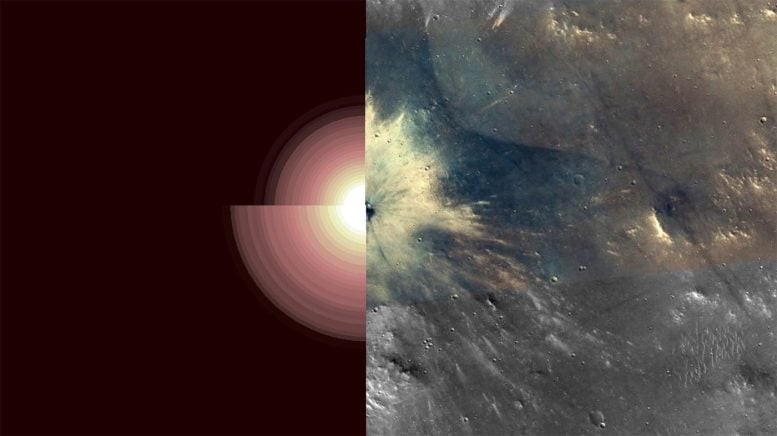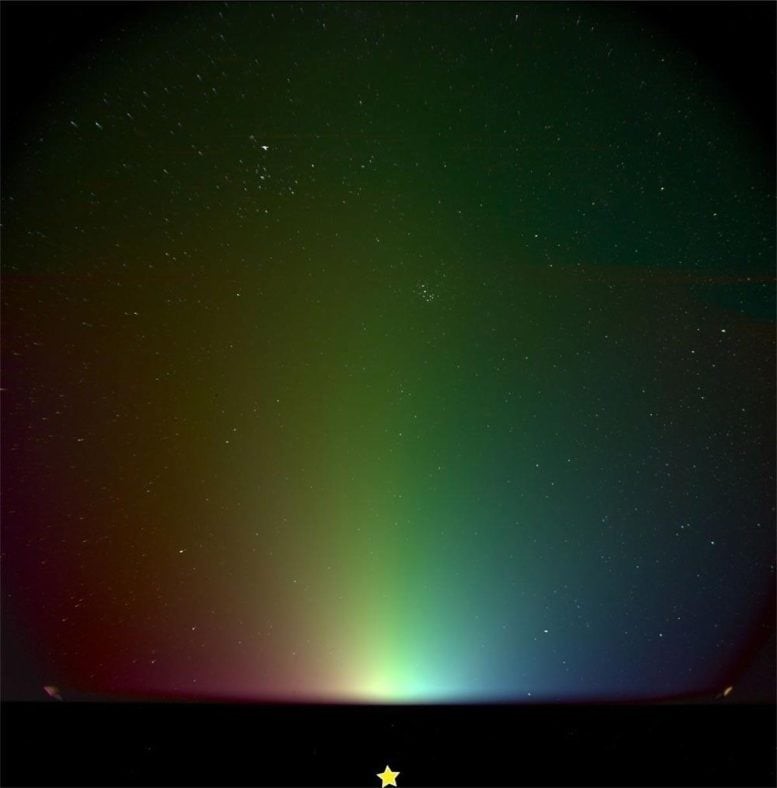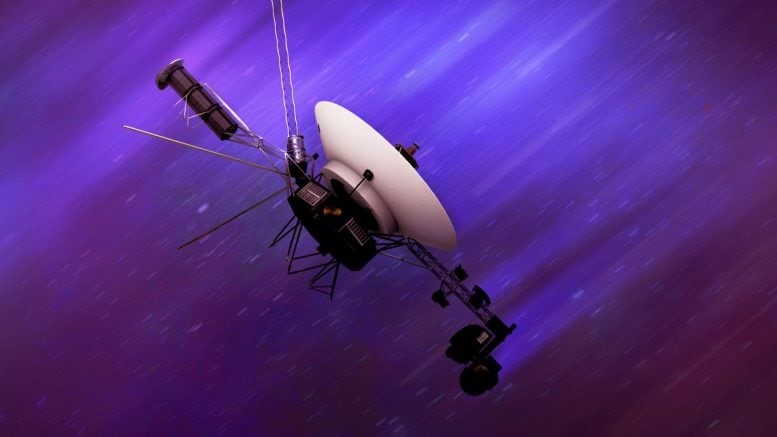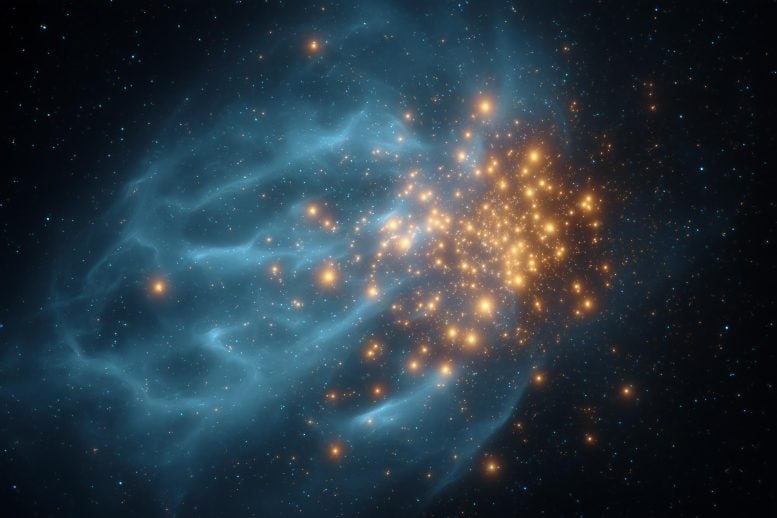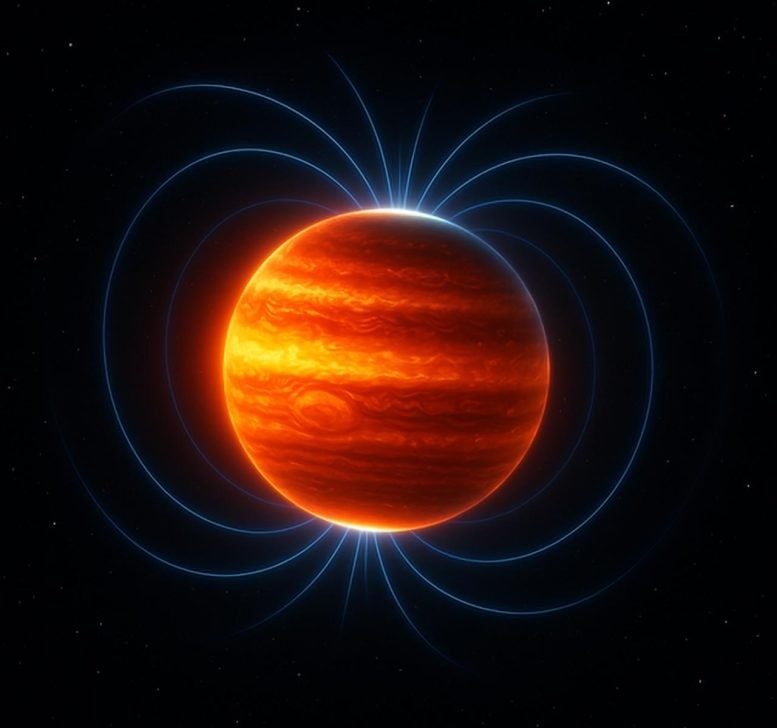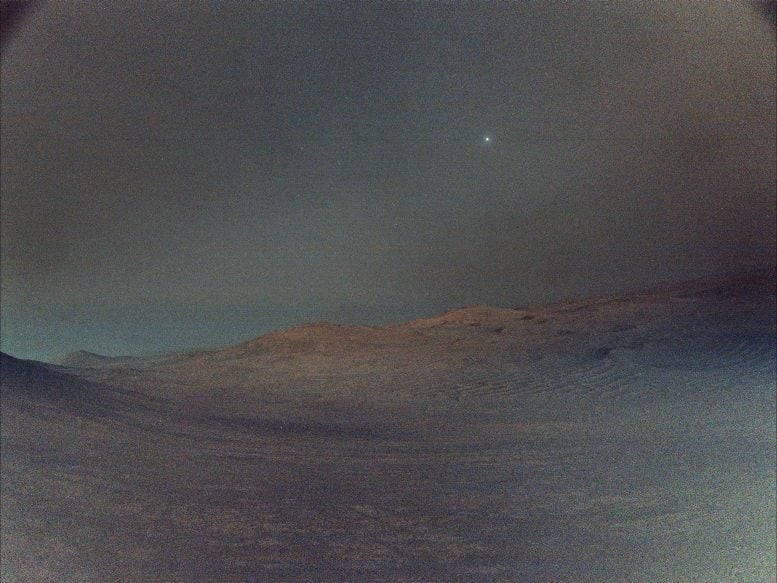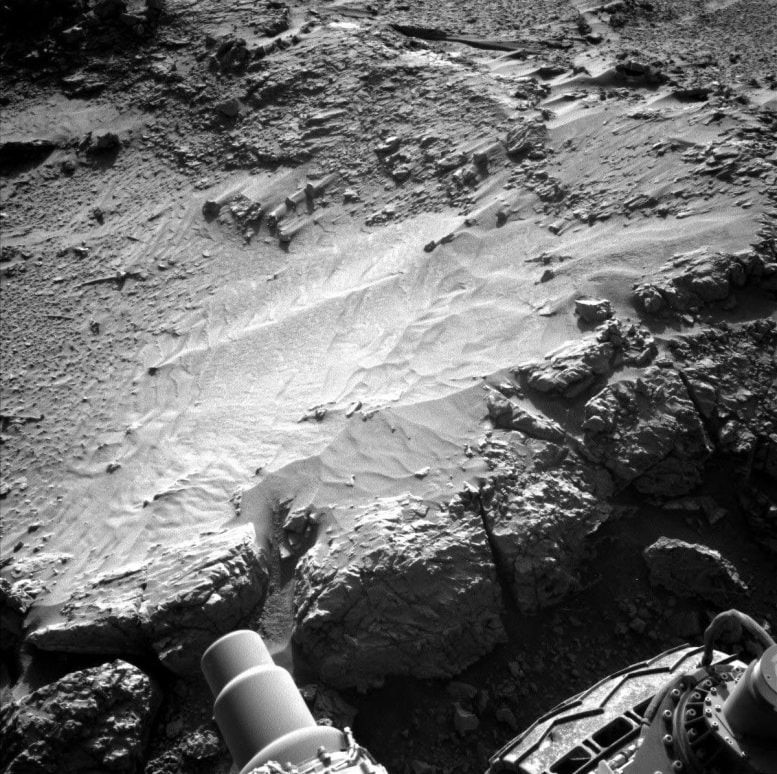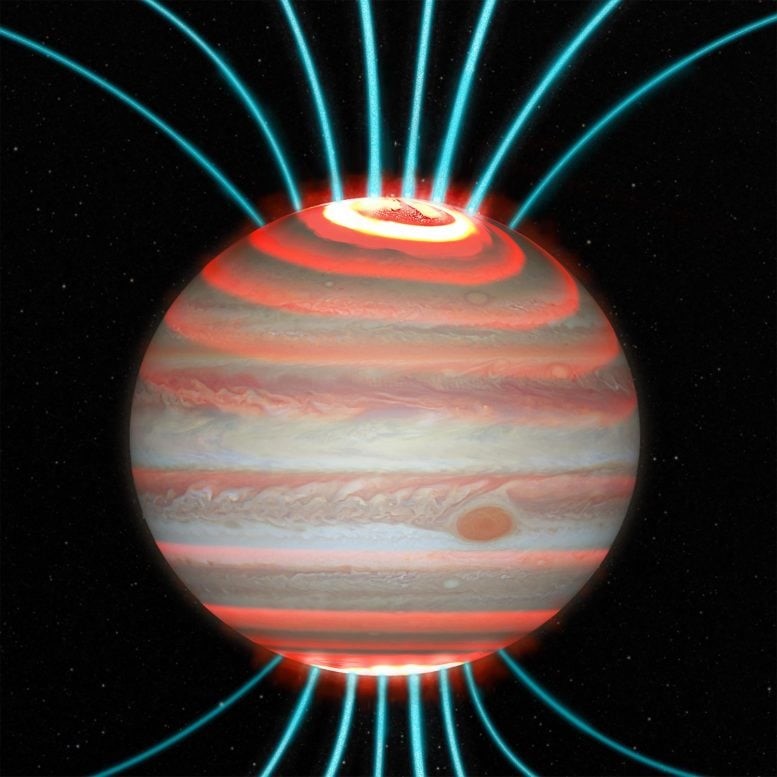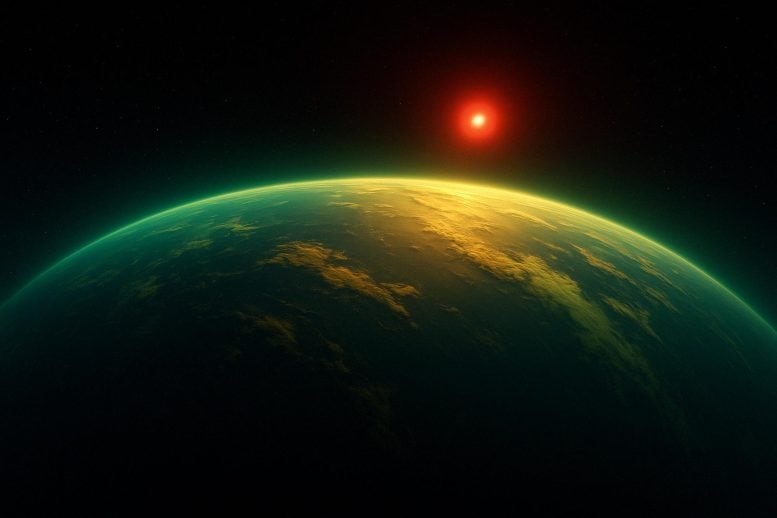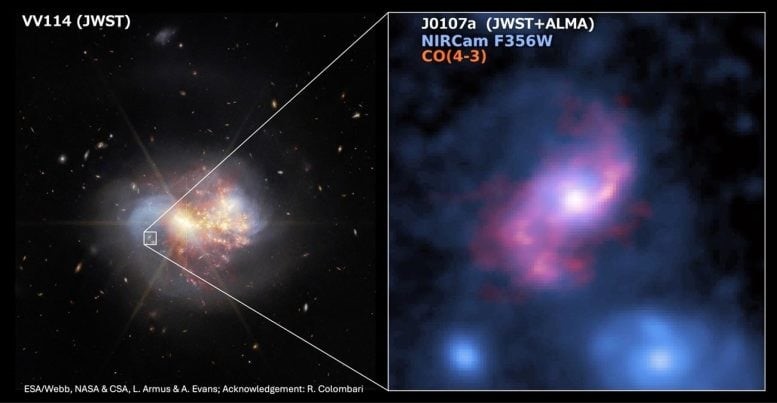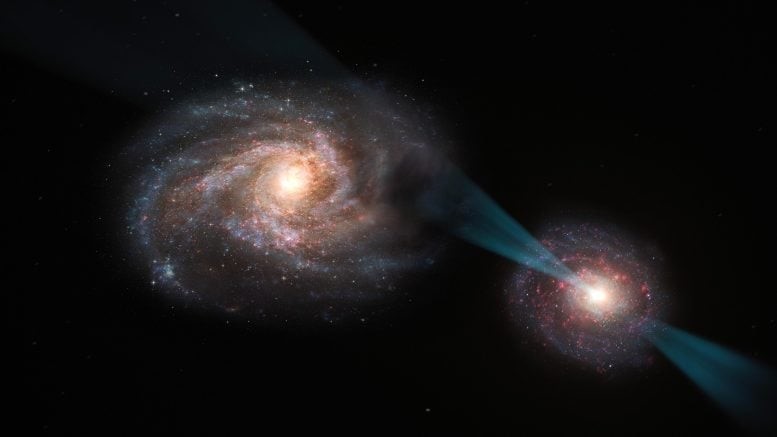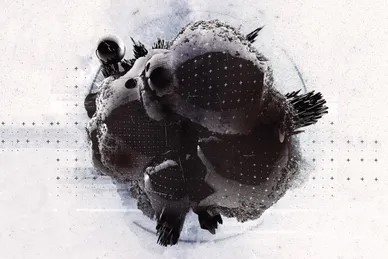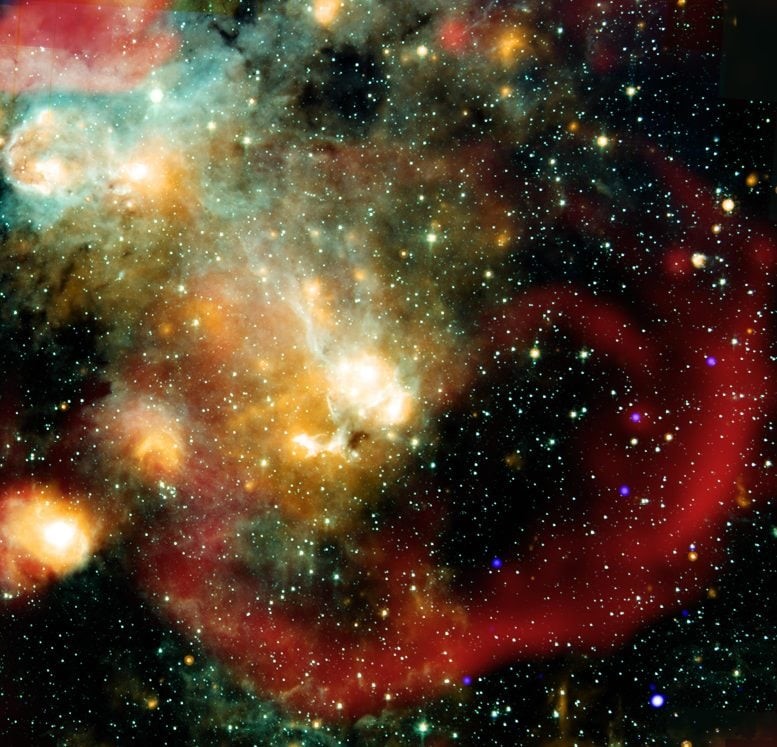Cotton Candy Clouds: Hubble Reveals Breathtaking Details of a Dwarf Galaxy
Unveiling the Invisible: Hubble’s Advanced Filters at Work
What makes this view truly extraordinary is Hubble’s ability to capture light beyond the range of human vision. Using its powerful Wide Field Camera 3 (WFC3), Hubble collected light through five distinct filters—some of which detect ultraviolet and infrared light, both invisible to our eyes. By combining these filtered views, astronomers can piece together a completer and more detailed portrait of the vibrant clouds within the dwarf galaxy.
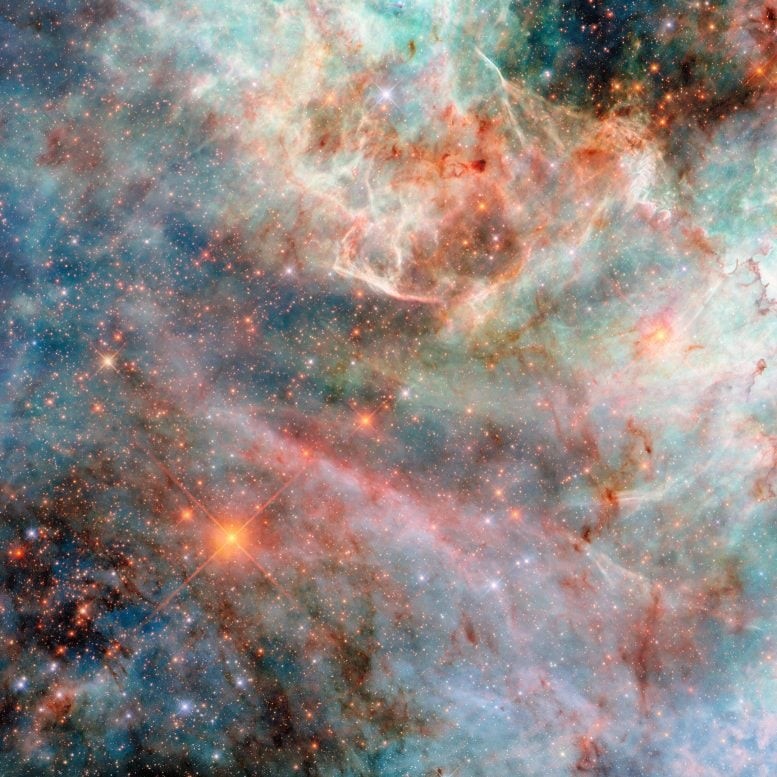
Figure 1. Hubble Captures Dwarf Galaxy Draped in Cotton Candy Clouds.
Transforming Data into Cosmic Masterpieces
The delicate gas clouds in the image resemble swirls of cotton candy in space. With such vivid colors on display, it’s natural to wonder: are these hues real? Unlike a standard camera, Hubble—equipped with its 2.4-meter mirror and cutting-edge instruments—operates in wavelengths far beyond normal vision. Figure 1 shows Hubble Captures Dwarf Galaxy Draped in Cotton Candy Clouds.
To create these striking images, processing experts assign colors to the different filters. Light captured in the visible spectrum is usually matched to its natural hue. Shorter wavelengths, like ultraviolet, are tinted blue or violet, while longer wavelengths such as infrared are rendered in shades of red. The result is a visually stunning and scientifically rich view of the cosmos.
True Colors or Creative Interpretation? The Science Behind Space Imagery
While the colors in this image closely reflect reality, they also incorporate data from parts of the electromagnetic spectrum that are invisible to the human eye. This approach reveals hidden details while maintaining a sense of realism. Still, there’s no single way to color these images—scientists and image specialists often choose from countless color combinations to highlight specific features or enhance visual impact, balancing scientific accuracy with aesthetic appeal.
A Whimsical View — What Are “Cotton Candy Clouds” in Space?
Explore the visual beauty of the dwarf galaxy image captured by Hubble. This part will describe the pink, blue, and violet wisps of gas and dust that resemble cotton candy, setting the scene for why this galaxy looks so ethereal and unique.
Hubble’s Eye on the Universe — How the Telescope Captured the Image
Delve into how Hubble’s Wide Field Camera 3 (WFC3) works. This section will explain how Hubble uses various filters, including ultraviolet and infrared, to detect light far beyond human vision, making such detailed images possible.
Beyond Human Vision — Seeing the Invisible Spectrum
This part explains the science of light and filters—how Hubble translates invisible wavelengths into colors we can see. It’ll introduce the concept of assigning colors to different wavelengths to create a complete and data-rich image.
The Art of Science — Are the Colors Real?
Here, discuss the color choices in astronomical imagery. While rooted in real data, color assignments often serve both scientific and artistic purposes. This section clarifies how colors help highlight specific structures, elements, or phenomena in space.
Why It Matters — The Scientific Value of Stunning Space Images
Wrap up by explaining the importance of studying dwarf galaxies. These small, faint galaxies can help scientists understand galaxy formation, dark matter, and early cosmic history. The final section ties the beauty of the image to its deeper scientific purpose.
Source: SciTECHDaily
Cite this article:
Priyadharshini S (2025), Cotton Candy Clouds: Hubble Reveals Breathtaking Details of a Dwarf Galaxy, AnaTechMaz, pp.362


